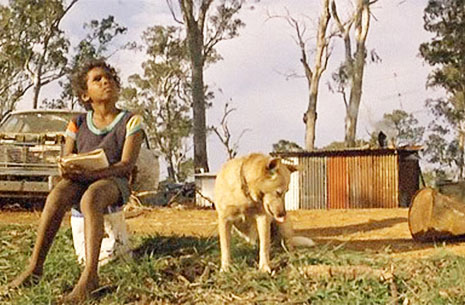There were several very different communities of cinephiles and industry professionals involved in the resurgence of the Australian film industry in the later 1960s and the 1970s. As numerous participants yield to publishers’ and agents’ blandishments, and write memoirs on histories now forty years deep, we can look at the philosophic differences among those who were craft- and industry-oriented from the beginning, and the ragged tribes of experimentalists, animation artists and politically driven documentarists who milled around the film-makers’ cooperatives. As I write, Tom Zubrycki and John Hughes, both documentary-makers of distinction, are preparing their film on the cooperatives, A Film-makers’ Cinema; Anthony Buckley, veteran producer of features and mini-series, has written his splendid tale, Behind a Velvet Light Trap; and David Stratton has published three works of memoir. Those are now joined by producer Sue Milliken’s highly enjoyable Selective Memory: A Life in Film. This is an especially sane and generous book, lucidly written, and shot through with a fine sense of comedy. All students of the movie business – meaning principally commercial feature films – should read it.
Sue Milliken moved into production-management and producers’ roles from early days in secretarial work and radio. Gifted with insight, imagination and great practicality, she became part of those projects which issued in The Odd Angry Shot, The Picture Show Man, Roadgames and – disastrously for her and others – Burke and Wills; that particular story yields its cautionary tales. Milliken blames an undisciplined, self-indulgent director for the way “a grand opportunity, a once in a lifetime chance to tell an episode in Australian history filled with more dramatic turns than a Dickens novel, [became] lost in a vision which somehow went awry much as the original expedition went awry.”
On those projects, working with a small company, Sue Milliken had the crucial but thankless role of completion guarantor, whose responsibility is to the investors, to get the film in on budget and preferably on time. In that role, she notes “you have to be sensitive to the creativity of others” but there’s no space to exercise your own; it’s all about “people management, logistics and pressure.” Later, as a full-fledged producer, she worked on three films with Bruce Beresford, The Fringe Dwellers, Black Robe and, outstandingly, Paradise Road. She looks back soberly on the first of those, a film that was always contentious, with white personnel directing an almost-all Aboriginal cast in a time when Aboriginal control had become an issue. From that point on, Milliken has been an advocate for Aboriginal film work; and her recollections here remind us that The Fringe Dwellers, long underrated, is one to see again.
So especially is Paradise Road; Milliken has a whole array of stories about that shoot, in Penang and North Queensland. While she doesn’t moralise, her accounts of the accidents, obstacles and moments of serendipity yield a clear philosophy, a deeply professional ethics. As it emerges from her memories and comments, the creative producer’s role is very clear; it involves intensive knowledge of script and concept, but minimal intervention; it means a proper focus on casting, and clearing the path for the director. She wants mutual respect among the various roles on a crew. She wants the necessities of the shoot, schedule and budget, to be fully respected by the biggest names to the smallest, and the needs of the film to be set above the clamourings of any performer’s ego.
On that score, the anecdote on Graham Kennedy’s demands on The Odd Angry Shot can be relished, with indulgence from the many who love him; and Glenn Close goes up in our esteem with the tale about her housing for Paradise Road. On the other hand, Milliken’s account of Dino de Laurentiis’s antics in his brief Australian adventures (Total Recall) is fine material for schadenfreude if you’ve suffered from that side of the global business. The book is valuable cultural history; and Milliken reminds us of how art and commerce can be entangled, recalling how when the Menzies government – never sympathetic to the cause of Australian film – was establishing the structures for local television, it was decreed that all TV advertising should be locally made. That factor, along with government-made documentary, kept the crafts and skills alive through the years when there was no real film industry. It was re-established, with the inception of the Australian Film Development Corporation, in 1971; there followed a remarkable upsurge of creativity, and Milliken’s main enthusiasm is for the many features of the seventies and early eighties. (There are numerous titles here on which I can’t agree with her, but that takes nothing from my pleasure in the book.)
Every film shoot is an adventure, often quite a lot of them. I remember how when Francois Truffaut’s Day for Night appeared, telling a rather gentle tale of drama behind the camera, a number of local film-makers commented that all that was kindergarten – where was the grown-up strife on the shoot, with mayhem and blood on the floor? I remember too how once the industry got going in the early seventies, those most centrally involved would tell you that with all the melodrama and struggle for money, all they ever wanted was to be out there, doing the jobs on set or location, getting it into the can. There’s the magnetism of it; and mainly by sticking to her own particular memories, never laying on more colour than she needs, Sue Milliken communicates the magnetism, and the magic.
The book has an index, but – regretfully quibbling – I do wish her publishers had required endnotes and a filmography for the writer herself, taking in the features, documentaries and miniseries on which she has worked; from the finely reserved way she tells her own story, there’s more than you might think. •





